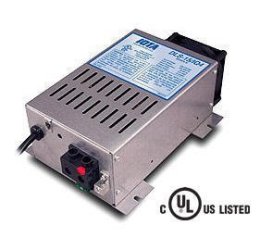Your Van’s Electrical System
 Many people fund their VanLife in many different ways. e.g. Seasonal/temporary work, disability, and retirement. But if you’re like me — working full-time, remotely — then the electrical system almost becomes the most important thing.
Many people fund their VanLife in many different ways. e.g. Seasonal/temporary work, disability, and retirement. But if you’re like me — working full-time, remotely — then the electrical system almost becomes the most important thing.
How will you continue working if you can’t charge your phone, cameras, laptop, and turn on some lights? (Not to mention staving off boredom by watching movies on your computer.) And if you can’t keep working, how will you afford to do this full-time, year round? And have you thought about refrigeration for your food?
Here are several different electrical system configurations based on your needs and budget.
Related: The VanLife Store, all the tools and products you need build and live your VanLife.
The Day Trip
 Don’t spend any more than you need to. Grab a 12V DC to AC inverter to charge your small electronics while driving.
Don’t spend any more than you need to. Grab a 12V DC to AC inverter to charge your small electronics while driving.
The Weekender
Do yourself a favor, leave the laptop at home, but go ahead and bring your cameras, phones, and tablets for on the spot inspirational moments. Then recharge with this external battery, and if it drains, plug it in to the 12V inverter above.
The Long Road Trip
 If you’re only going to be gone for a week or two, you might still be able to get away with just charging off your vehicle’s battery. However, you’re going to need a little more juice so you can bring your laptop. This is the exact 300W pure sine wave inverter I bought for my van. Of course, you can plug-in and charge anything up to 300W.
If you’re only going to be gone for a week or two, you might still be able to get away with just charging off your vehicle’s battery. However, you’re going to need a little more juice so you can bring your laptop. This is the exact 300W pure sine wave inverter I bought for my van. Of course, you can plug-in and charge anything up to 300W.
Long Term and Full-Time
 This is where thought, consideration, and a bigger wallet comes in. Make sure to keep your eye on Craigslist, online forums, garage sales, and friends-of-friends that might have some of this stuff lying around. If you can get any or all of it used or free, you’ll save a ton of money.
This is where thought, consideration, and a bigger wallet comes in. Make sure to keep your eye on Craigslist, online forums, garage sales, and friends-of-friends that might have some of this stuff lying around. If you can get any or all of it used or free, you’ll save a ton of money.
Battery
At the heart of any system is the battery. There is much debate about “good, better, best” so for me, it comes down to what is good enough for what I can afford. In general, you want deep cycle and not a starter battery. After that, look for a sealed variety. And then you can start trying to decide if you want flooded lead-acid or gel. (Or a bunch of other varieties.)

I ended up with two of the 6V flooded lead-acid batteries shown over to the right because they were free. I wired them in series for my 12V system (6V + 6V = 12V).
However, if I had to go out and buy brand new batteries today, I’d pick up two of these Vmax batteries and wire them in parallel instead.
Charging – with your alternator (cheapest)
Charging with your alternator isn’t as easy as hooking up your house battery in parallel with your starting battery. If you did that, you’d drain the starter battery while the van isn’t running. Drained battery = Dead vehicle
In order to keep the two batteries separate when the van is off, but charge both of them when the van is running, you can add a cheap and simple solenoid. You’ll also need a self-resetting circuit breaker to handle the overcurrent surges during engine starting. This is what I bought and connected everything with 10AWG wire:


Charging – while plugged into a regular 110V outlet (cheap, or maybe not)
 I’m about to give you two options. For either one, I recommend getting a charger with overcharging protection. You’ll spend more money on the initial purchase, but you’ll save money by not damaging your batteries when you forget to turn it off.
I’m about to give you two options. For either one, I recommend getting a charger with overcharging protection. You’ll spend more money on the initial purchase, but you’ll save money by not damaging your batteries when you forget to turn it off.
If this isn’t a permanent electrical system install, you could get a portable battery charger and keep it in your garage or closet when you’re not using it. Then just connect and disconnect as needed.
 In my case, I wanted a permanent installation. Not only that, but I needed a charger / power supply that would be able to deliver enough current to charge my batteries and power my loads at the same time (including a refrigerator). Once again, I got this for the price of a couple cases of beers, but I would have paid for or found something similar if I needed.
In my case, I wanted a permanent installation. Not only that, but I needed a charger / power supply that would be able to deliver enough current to charge my batteries and power my loads at the same time (including a refrigerator). Once again, I got this for the price of a couple cases of beers, but I would have paid for or found something similar if I needed.
Charging – Solar (expensive)
The main components are a panel (or panels), fuses, and a charge controller.
Solar Panels
 You can get portable ones or permanent ones. Again, it’s up to your application and budget. The biggest considerations are how fast you want to recharge your batteries and if you want to power your loads directly from the panels at any point.
You can get portable ones or permanent ones. Again, it’s up to your application and budget. The biggest considerations are how fast you want to recharge your batteries and if you want to power your loads directly from the panels at any point.
I received three of these 100W panels from Renogy, and mounted them permanently on my roof.
Solar Charge Controller
This is a huge topic since there are a ton of different features and options based on your application so I will keep it simple. A cheap version that will work decently well for most applications, and my option, which is a little more complex and expensive.
 The cheap one:
The cheap one:
This is a very basic, very easy plug and play module. It does everything you need a solar charge controller to do: charge, monitor, and prevent overcharging. However, some of those things can be improved with added complexity and price.

The one I have:
The one I got was the Solar Boost SB50. That model is now discontinued, but you can still find them around or the newer models. I got this for free as well.
This is an adjustable MPPT solar charge controller and gives me greater flexibility to optimize it for my system.
The Whole Solar Kit
If you really don’t want to think about anything and be good for most typical installs, I would really suggest something like this. If I didn’t get so much of my system for free, it is most definitely the route I would have went.
Of course, there are other, more expensive options similar to this kit with better and upgraded components, but staying within budget is more important than convenience features.
My Electrical System in the Van
My electrical system consists of:
- Two 6V batteries
- A 12V Continuous Duty Solenoid
- IOTA DLS45 charger/converter
- Blue Sky Solar Boost 50
- Samlex 300W Pure Sine Wave inverter
And a bunch of interconnect cables, bus bars, fuse blocks, switches, outlets, and several LED lights. Take a look here:
Your Electrical System
 The details I left out are the details that can only be addressed on a case by case basis. I don’t know exactly your loads, your space, your budget, or your intentions. Do you need bus bars; do you not? Are you powering enough outlets and lights that you’ll need a fuse block or can you just use inline fuses?
The details I left out are the details that can only be addressed on a case by case basis. I don’t know exactly your loads, your space, your budget, or your intentions. Do you need bus bars; do you not? Are you powering enough outlets and lights that you’ll need a fuse block or can you just use inline fuses?
For a free download of all of my electrical schematics and what I used to design my system, just enter your email below. If you’re in the process of designing your own system and need some one-on-one help, you can also sign-up and send me a message.
This project, out of the entire van build, got me the most excited. It gave me the opportunity to use my degree as an electrical engineer, and I absolutely love geeking out on this stuff. Don’t hesitate to sign-up and ask me anything you got.
Send them, Send them now!
For a handpicked collection of VanLife products and tools, check out the VanLife Store!

